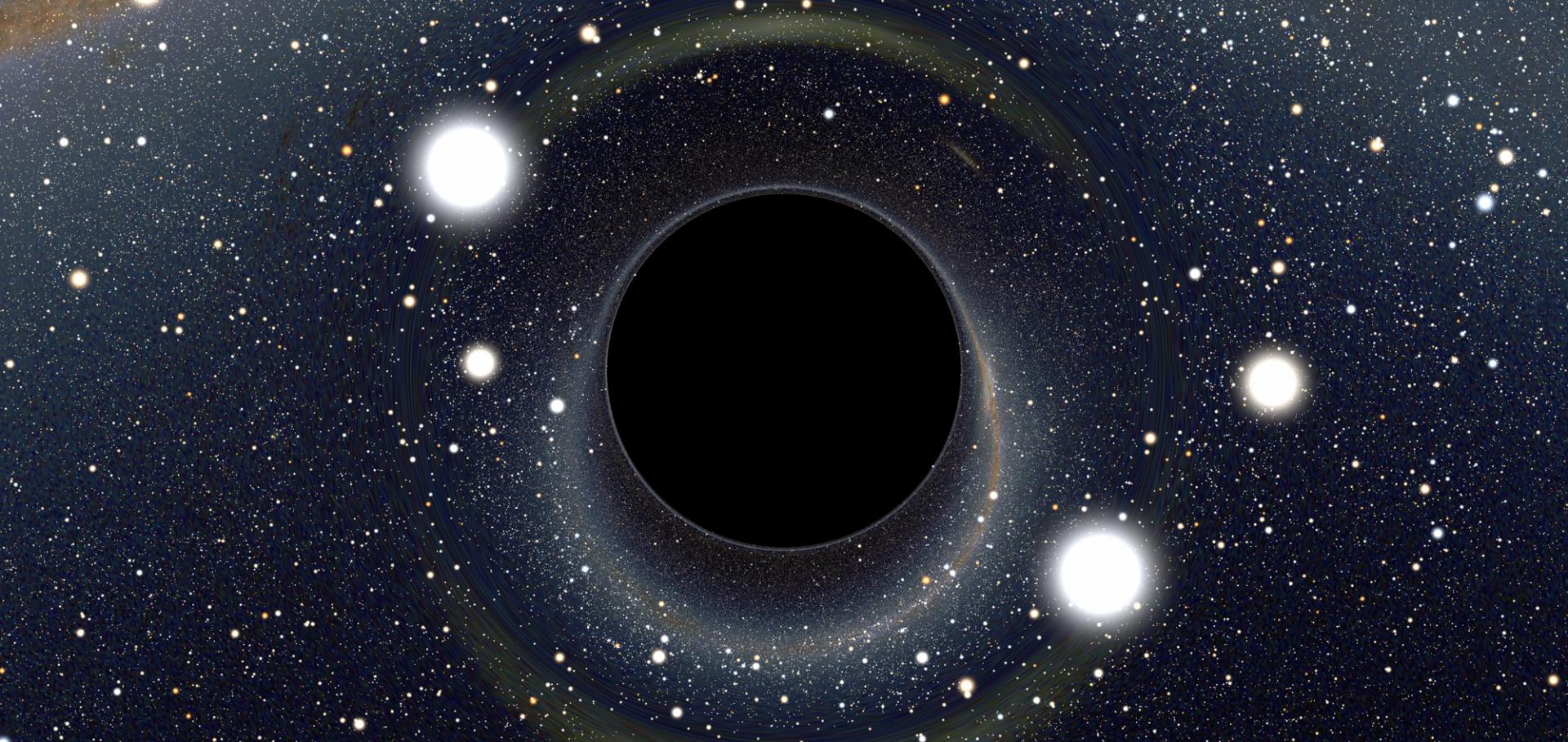The nuclear stellar core, the hot dust source, and the location of the nucleus of NGC 1068
Astrophysical Journal 490:1 PART I (1997) 238-246
Abstract:
We present new near-infrared speckle and adaptive optics imaging and integral field spectroscopy of the nuclear region of NGC 1068. Ninety-four percent of the K-band light in the central 1" originates from a ≤30 milliarcsecond diameter source whose position we determine to coincide within ± 0''15 with the apex of the cone structure seen in the optical narrow emission lines, as well as the location of the flat spectrum radio component SI and the 12 μm emission peak. We interpret the compact source as hot dust near the sublimation temperature within ∼ 1 pc of the true nucleus of the galaxy. The remaining 6% of the light in the central 1″ comes from a moderately extincted stellar core centered on the nuclear position and of intrinsic size ∼50 pc. We show that this nuclear stellar core is probably 5-16 × 108 yr in age and contributes at least 7% of the total nuclear luminosity of ~1 × 1011 L⊙. © 1997. The American Astronomical Society. All rights reserved.3D - A new generation imaging spectrometer
P SOC PHOTO-OPT INS 2871 (1997) 1179-1186
Abstract:
3D is a new type of a highly sensitive near-infrared integral field spectrometer developed at MPE. It has been designed to multiplex spectral as well as spatial information thus obtaining a full data cube in a single integration. At a spectral resolution between 1000 and 2000 and a field of view of 16 x 16 pixels, optimized for subarcsecond spatial resolution imaging spectroscopy, it has a much higher efficiency compared to conventional techniques. Outfitting one of the VLTs with a near-IR 3D type instrument will provide a powerful tool for diffraction-limited integral field spectroscopic research, in particular on faint high-z galaxies in the early universe. The basic design, recent upgrades as well as plans for a possible VLT-3D instrument are presented.High-resolution near-infrared observations of NGC 1068
ASTROPHYS SPACE SCI 248:1-2 (1997) 295-300
Abstract:
We present near-infrared observations of NGC 1068 obtained with the SHARP camera at the ESO 3.5 m telescope, and with SHARP II attached to the COME-ONS adaptive optics system at the ESO 3.6 m telescope. From the SHARP observations we obtain a K band image of the stellar bar with O.'' 4 resolution, and an upper limit to the sire of the nuclear K band source of 0.'' 05 (3.5 pc). The adaptive optics observations are used to determine the position of the infrared nucleus with respect to the visible continuum. The centroid of the 5000 to 9000 Angstrom continuum is displaced 0.'' 23 +/- 0.'' 10 to the east and 0.'' 41 +/- 0.'' 10 to the north of the K band peak.NIR imaging spectroscopy of IRAS F10214+4724: Evidence for a starburst region around an AGN at z=2.3
REV MEX AST ASTR 6 (1997) 48-51
Abstract:
We report 1'' K-band imaging spectroscopy of the z=2.284 galaxy IRAS F10214+4724. We find that the rest-frame H alpha and [N II] emission have different spatial extents. Furthermore, we detect broad (Delta upsilon(FWZP)approximate to 3500 km s(-1)) H alpha emission. We conclude that F10214+4724 is a very luminous gravitationally lensed galaxy, which intrinsically contains both a type 1 AGN and a more extended star-forming disk. The AGN and circumnuclear star formation both contribute significantly to the total luminosity of similar to 10(13)L(circle dot).The nuclear stellar cluster in NGC 1068
REV MEX AST ASTR 6 (1997) 227-229


